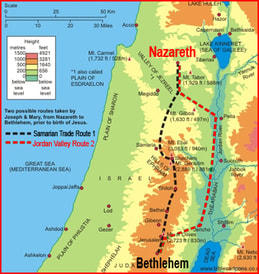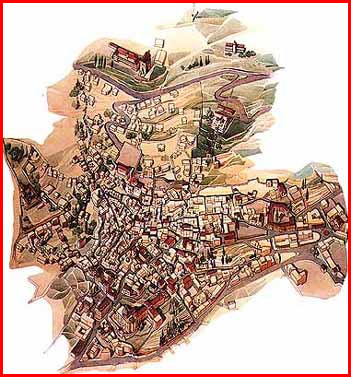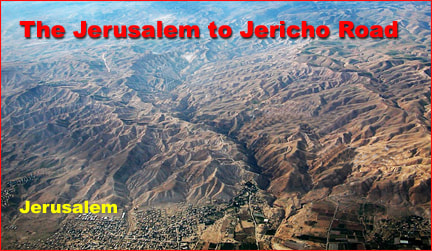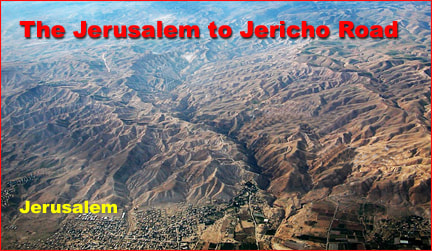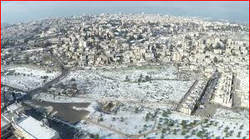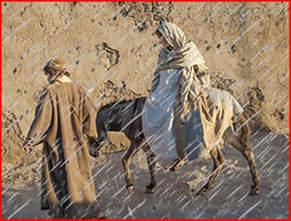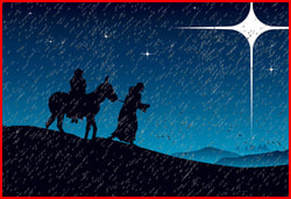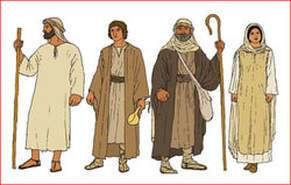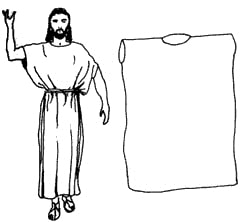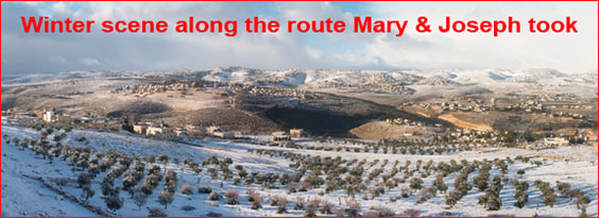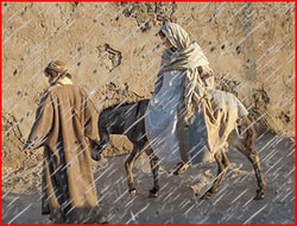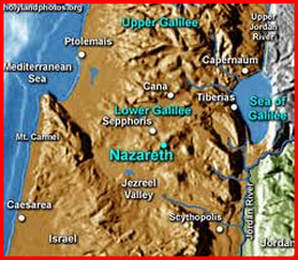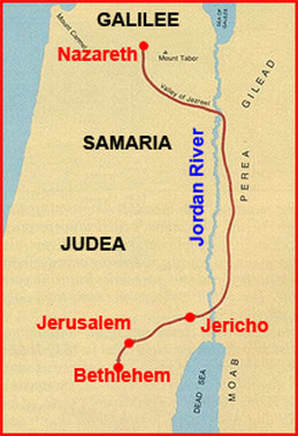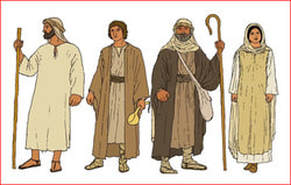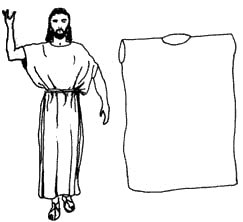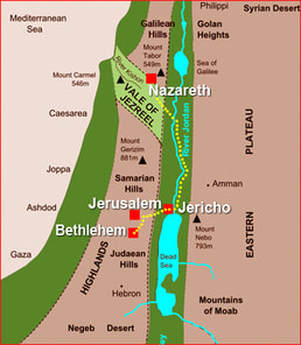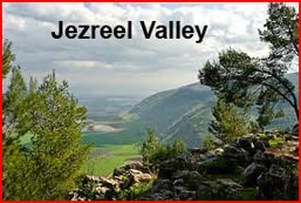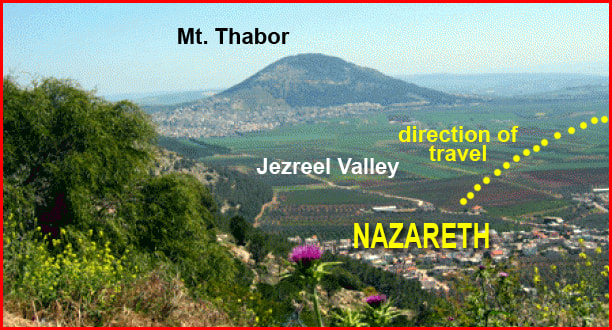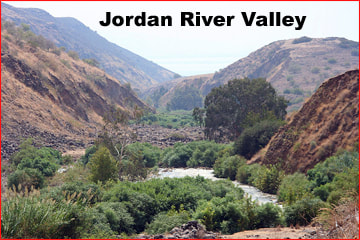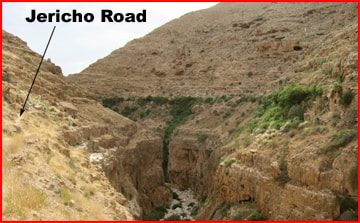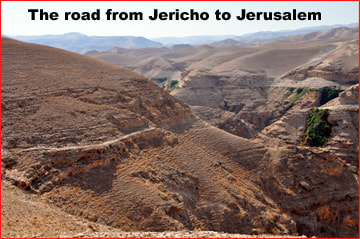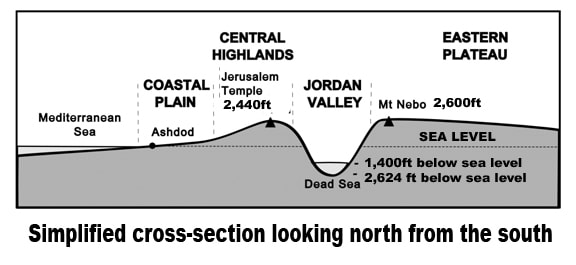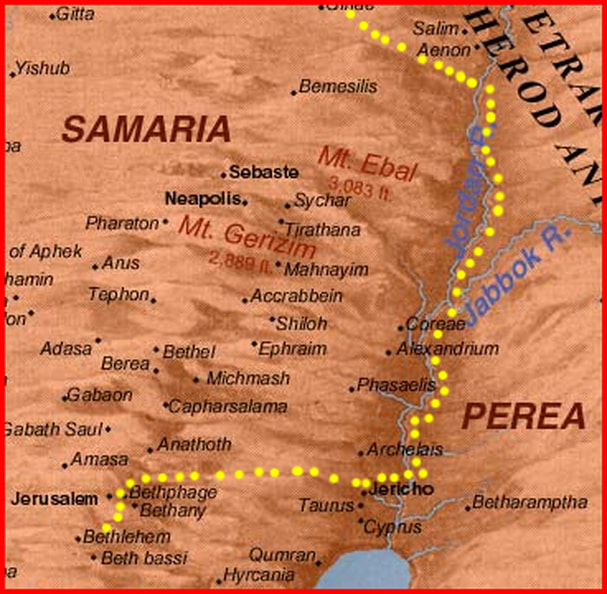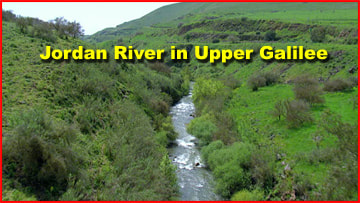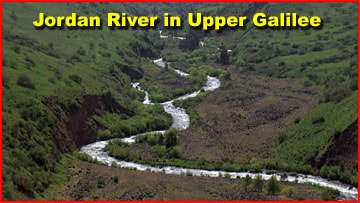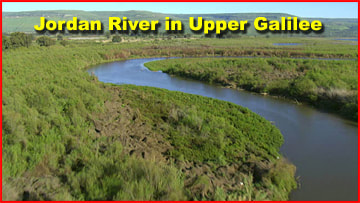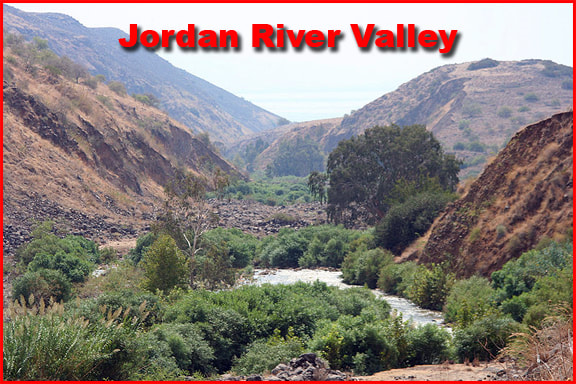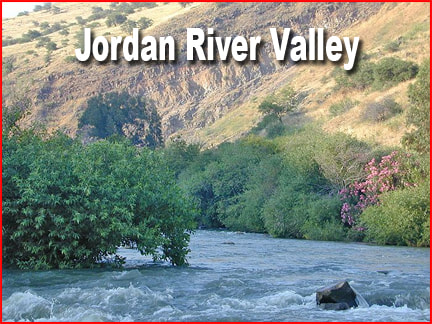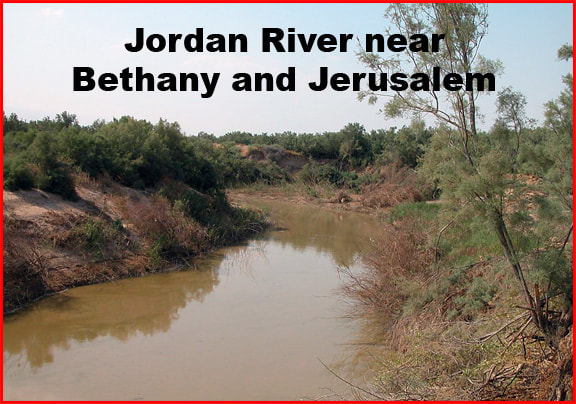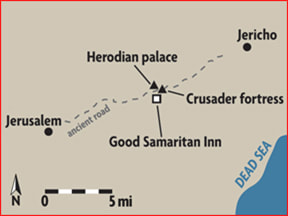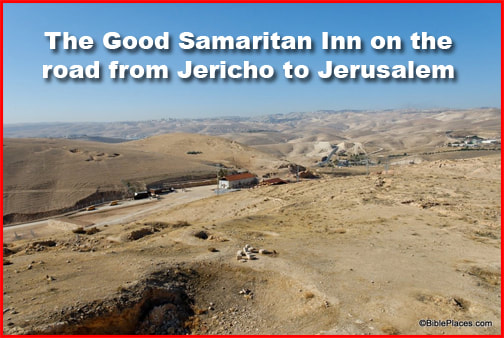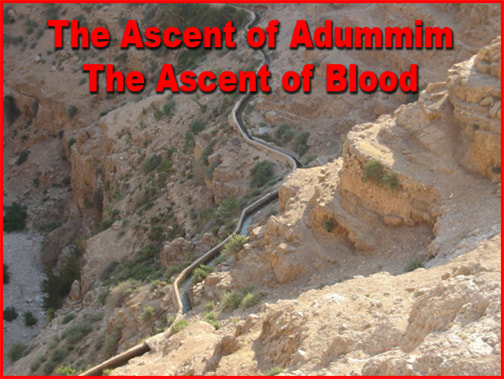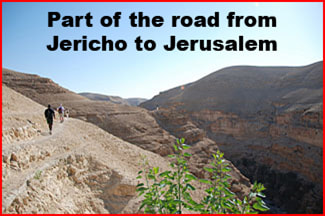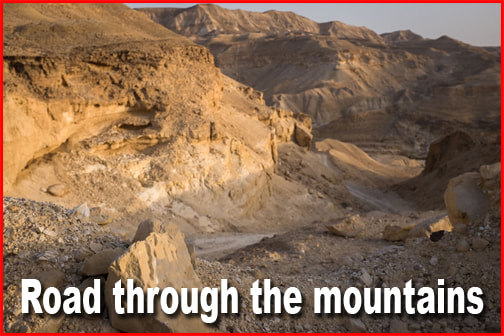| Devotion to Our Lady |
|
- Homepage
-
Daily Thoughts
- 2023 October Daily Thoughts
- Daily Thoughts Lent 2020
- Daily Thoughts for Advent 2019
- Daily Thoughts for October 2019
- Daily Thoughts for September 2019
- Daily Thoughts for August 2019
- Daily Thoughts for July
- Daily Thoughts for June
- Daily Thoughts for Easter 2019
- Daily Thoughts for Lent 2019
- Daily Thoughts for Christmas
- Daily Thoughts Easter 2022
- Sacred Heart
- Holy Ghost
-
Spiritual Life
- Holy Mass Explained
- First Friday Devotions
- First Saturday Devotions
- The Mercy of God
- Vocations
- The Path Everyone Must Walk >
- Gift of Failure
- Halloween or Hell-O-Ween?
- Ignatian Spiritual Exercises >
- Meditation is Soul-Saving
- Spiritual Communion
- Miraculous Medal
- Enrollment in Miraculous Medal
- St. Benedict Medal
- Holy Water
- Advice on Prayer
- Your Daily Mary
-
Prayers
- September Devotions
- Seven Sorrows of Our Lady
-
Novenas
>
- NV-Help of Christians
- NV-Nativity of Our Lady
- NV-Seven Sorrows
- NV- Sorrowful Heart
- NV-Pope St Pius X
- NV-La Salette
- NV-St Michael Archangel
- NV-Immaculate Heart
- NV-Assumption
- NV-Novena for Fathers
- NV-Novena for Your Mother
- NV-St Raphael Archangel
- NV-Souls in Purgatory
- NV-All Saints Day
- NV-Christ the King
- NV-Divine Motherhood
- NV-Guardian Angels
- NV-Rosary
- NV-Mirac Med
- NV- Imm Conc
- NV - Guadalupe
- NV - Nativity of Jesus
- NV-Epiphany
- NV-OL Good Success
- NV-Lourdes
- NV-St Patrick
- NV-St Joseph
- NV-Annunciation
- NV-St Louis de Montfort
- NV-OL Good Counsel
- NV-Last Supper
- NV-Passion
- NV-Pentecost
- NV-Ascension
- NV-Sacred Heart
- NV-Sacred Heart & Perpetual Help
- NV-Corpus Christi
- NV-OL of Perpetual Help
- NV-Queenship BVM
- NV-OL of Mount Carmel
- NV-St Mary Magdalen
- NV- Im Hrt
- August Devotions to IHM
- Immaculate Heart of Mary
- Litany of Dependence
- Prayers to St Mary Magdalen
- Prayers in Times of Sickness Disease & Danger
- Holy Souls in Purgatory
- Meditations on the Litany of Our Lady
- Special Feast Days
- Prayers to Mary (Mon-Sun)
- Litanies to Our Lady >
- Various & Special Needs
- Our Lady of the Rosary
- Our Lady of Mt. Carmel
- Our Lady of Perpetual Help
- Our Lady of Guadalupe
- Other titles of Our Lady
-
Rosary
- Downloads
- Consecration
- Easter Season
-
Holy Week
- Last Seven Words of Jesus >
- Characters of Passion >
- The Last Days of Christ
- Before Palm Sunday
- Palm Sunday
- Monday in Holy Week
- Tuesday in Holy Week
- Wednesday in Holy Week
- Holy Thursday (Last Supper)
- Holy Thursday (Agony & Arrest)
- Night Vigil with Christ
- Good Friday (Pilate & Herod)
- Good Friday (Way of Cross & Crucifixion)
- Saturday in Holy Week
-
Lent
- Ideas for Lent
- Daily Lenten Planner
- Daily Lenten Liturgy
- From Cold to Hot
- Lent with Aquinas
- Lent with Dom Gueranger
- Virtues for Lent
- History of Penance
- How Expensive is Sin?
- Confession of Sins
- Letter to Friends of the Cross
- Sermons for Lent
- Stations of the Cross >
- Lenten Prayers
- 7 Penitential Psalms
- Lenten Psalms SUN
- Lenten Psalms MON
- Lenten Psalms TUE
- Lenten Psalms WED
- Lenten Psalms THU
- Lenten Psalms FRI
- Lenten Psalms SAT
- Lenten Laughs
- Septuagesima
-
Christmas
- Epiphany Explained
- Suggestions for Christmas
- Food For Thought
- Christmas with Aquinas
- Christmas with Dom Gueranger
- Christmas Prayers
- Candles & Candlemas
- Christmas Sermons
- Christmas Prayers SUN
- Christmas Prayers MON
- Christmas Prayers TUE
- Christmas Prayers WED
- Christmas Prayers THU
- Christmas Prayers FRI
- Christmas Prayers SAT
- Twelve Days of Christmas >
-
Advent Journey
- Purgatory
- Christ the King
- Legion of Mary
- Scapular
-
Saints
-
Martyrs for the Faith
>
- Your Daily Martyr >
- All 365 Days of Martyrs
- Cristeros
- St Valentine & Valentine's Day
- Martyrs--Thomas Becket
- Martyrs--John the Apostle
- Holy Machabees
- Age of Martyrdom
- Carmelites of Compiegne
- Martyrs--Peter & Paul
- Martyrs--John the Baptist
- Martyrs--Andrew
- Martyrs--James the Great
- Martyrs--North American
- Martyrs--Seven Holy Sleepers
- Martyrs--Afra
- School of Martyrdom
- Martyrs--Christina
- Desert Saints >
- Saints for Sinners >
- Saints of Mary >
- History of All Saints Day
-
Martyrs for the Faith
>
- Precious Blood
- Synod 2023
-
Catechism
- Catechism Lesson 1
- Catechism Lesson 2
- Catechism Lesson 3
- Catechism Lesson 4
- Catechism Lesson 5
- Catechism Lesson 6
- Catechism Lesson 7
- Catechism Lesson 8
- Catechism Lesson 9
- Catechism Lesson 10
- Catechism Lesson 11
- Catechism Lesson 12
- Catechism Lesson 13
- Catechism Lesson 14
- Catechism Lesson 15
- Catechism Lesson 16
- Catechism Lesson 17
- Catechism Lesson 18
- Catechism Lesson 19
- Catechism Lesson 20
- Catechism Lesson 21
- Catechism Lesson 22
- Bible Study
-
Calendar
- Miracles
- Apparitions
- Shrines
- Prophecies
- Angels Homepage
- Hell
-
Church Crisis
- Conspiracy Theories
- Amazon Synod 2019 >
- Liberalism & Modernism
- Modernism--Encyclical Pascendi
- Modernism & Children
- Modernism--Documents
- The Francis Pages
- Church Enemies on Francis
- Francis Quotes
- Amoris Laetitia Critique
- Danger of Ignorance (Pius X)
- Restore all In Christ (Pius X)
- Catholic Action (Pius X)
- Another TITANIC Disaster?
- The "Errors of Russia"
- CRISIS PRAYERS
- Election Novena 2024
- The Anger Room
- War Zone
- Life of Mary
- Spiritual Gym
- Stupidity
- Coronavirus and Catholicism
- History & Facts
- Books
- Catholic Family
- Children
- Daily Quiz
-
Novena Church & Pope
- Day 01 Church-Pope Novena
- Day 02 Church-Pope Novena
- Day 03 Church-Pope Novena
- Day 04 Church-Pope Novena
- Day 05 Church-Pope Novena
- Day 06 Church-Pope Novena
- Day 07 Church-Pope Novena
- Day 08 Church-Pope Novena
- Day 09 Church-Pope Novena
- Day 10 Church-Pope Novena
- Day 11 Church-Pope Novena
- Day 12 Church-Pope Novena
- Day 13 Church-Pope Novena
- Day 14 Church-Pope Novena
- Day 15 Church-Pope Novena
- Day 16 Church-Pope Novena
- Day 17 Church-Pope Novena
- Day 18 Church-Pope Novena
- Day 19 Church-Pope Novena
- Day 20 Church-Pope Novena
- Day 21 Church-Pope Novena
- Day 22 Church-Pope Novena
- Day 23 Church-Pope Novena
- Day 24 Church-Pope Novena
- Day 25 Church-Pope Novena
- Day 26 Church-Pope Novena
- Day 27 Church-Pope Novena
- Day 28 Church-Pope Novena
- Day 29 Church-Pope Novena
- Day 30 Church-Pope Novena
- Day 31 Church-Pope Novena
- Day 32 Church-Pope Novena
- Day 33 Church-Pope Novena
- Day 34 Church-Pope Novena
- Day 35 Church-Pope Novena
- Day 36 Church-Pope Novena
- Day 37 Church-Pope Novena
- Day 38 Church-Pope Novena
- Day 39 Church-Pope Novena
- Day 40 Church-Pope Novena
- Day 41 Church-Pope Novena
- Day 42 Church-Pope Novena
- Day 43 Church-Pope Novena
- Day 44 Church-Pope Novena
- Day 45 Church-Pope Novena
- Day 46 Church-Pope Novena
- Day 47 Church-Pope Novena
- Day 48 Church-Pope Novena
- Day 49 Church-Pope Novena
- Day 50 Church-Pope Novena
- Day 51 Church-Pope Novena
- Day 52 Church-Pope Novena
- Day 53 Church-Pope Novena
- Day 54 Church-Pope Novena
- Penance Novena
- Daily WeAtheR Forecast
CLICK ON ANY LINK BELOW
| Advent Journey | Advent with Aquinas | Advent with Dom Gueranger | Advent Sermons |
| Advent Prayers (not psalms) | From Cold to Hot for Christmas |
| Journey to Bethlehem | Pre-Advent Countdown |
IF YOU REALLY WANT TO "GET INTO" ADVENT, THEN PRAY THE PSALMS
TRANSFORM YOUR HOME INTO THE "DOMESTIC CHURCH" IT IS MEANT TO BE!
LINKS TO PSALMS FOR EVERY DAY OF THE WEEK DURING ADVENT
| Sundays | Mondays | Tuesdays | Wednesdays | Thursdays | Fridays | Saturdays |
| Advent Journey | Advent with Aquinas | Advent with Dom Gueranger | Advent Sermons |
| Advent Prayers (not psalms) | From Cold to Hot for Christmas |
| Journey to Bethlehem | Pre-Advent Countdown |
IF YOU REALLY WANT TO "GET INTO" ADVENT, THEN PRAY THE PSALMS
TRANSFORM YOUR HOME INTO THE "DOMESTIC CHURCH" IT IS MEANT TO BE!
LINKS TO PSALMS FOR EVERY DAY OF THE WEEK DURING ADVENT
| Sundays | Mondays | Tuesdays | Wednesdays | Thursdays | Fridays | Saturdays |
COME AND JOIN MARY AND JOSEPH ON THEIR JOURNEY TO BETHLEHEM!
In these last days before the birth of our Lord and Savior, Jesus Christ, at Bethlehem, we will try—as best is possible from the limited resources that are available—to reconstitute some the circumstances and events that Mary and Joseph encountered on that near 100-mile trek from Nazareth to Bethlehem.
In these last days before the birth of our Lord and Savior, Jesus Christ, at Bethlehem, we will try—as best is possible from the limited resources that are available—to reconstitute some the circumstances and events that Mary and Joseph encountered on that near 100-mile trek from Nazareth to Bethlehem.
Article 1
Setting the Scene and Measuring the Distance
Setting the Scene and Measuring the Distance
|
TO ENLARGE THE MAPS, HOLD DOWN THE "CONTROL KEY" (CTRL) WHILE PRESSING THE "PLUS-SIGN KEY" (+) AS MANY TIMES AS ARE NEEDED.
TO RETURN TO "NORMAL VIEWING SIZE" HOLD DOWN THE "CONTROL KEY" WHILE PRESSING THE "ZERO KEY" (0). |
God's Ways Are Not Our Ways
God likes to be different! Perhaps it is because He is different! So we should be surprised if He doesn't think and act as we would think and act. In fact, God tells us, through Isaias His prophet, that “‘My thoughts are not your thoughts; nor your ways My ways!’ saith the Lord. For as the Heavens are exalted above the Earth, so are My ways exalted above your ways, and My thoughts above your thoughts!” (Isaias 55:8-9). Nowhere is that statement proven to more true than in the birth of the Only-begotten Son of God! “And it came to pass, that in those days there went out a decree from Caesar Augustus, that the whole world should be enrolled. This enrolling was first made by Cyrinus, the governor of Syria. And all went to be enrolled, every one into his own city. And Joseph also went up from Galilee, out of the city of Nazareth into Judea, to the city of David, which is called Bethlehem: because he was of the house and family of David, to be enrolled with Mary, his espoused wife, who was with child” (Luke 2:1-5). It was Bethlehem was destined to be the birthplace of the Son of God, the Messias, and Mary was far from Bethlehem at that time! “And thou, Bethlehem Ephrata, art a little one among the thousands of Juda! Out of thee shall He come forth unto Me that is to be the Ruler in Israel!” (Micheas 5:2). Had God forgotten all about this? Why wasn’t Mary in Bethlehem, but, instead, in far-away Nazareth? You would have thought that if God was planning the birth of His Only-begotten Son, then He would have made things as smooth as possible for the Mother of that Only-begotten Son! Since there were no cars, buses, trains or planes in those days—you would think that God would arrange for Mary's safe arrival in Bethlehem (for that is where God prophesied His Son would be born) in good time, so as to avoid any hardship or pain for the Mother of the Son of God! If we were planning it, we would perhaps have her already living in Bethlehem. Not so with God! To the human mind, it looks as though He had totally forgotten about it and has Mary running down there at the last minute—nine months pregnant! It's a Long Way to Bethlehem Mary, It's a Long Way to Go... The direct distance, as the crow flies, from Nazareth (in northern Israel) to Bethlehem (just south west of Jerusalem) is about 70 miles. It is estimated that Mary and Joseph probably walked more than 90 miles before reaching their destination of Bethlehem. Mary and Joseph were compelled to make the long journey to Bethlehem because of a census that had been proclaimed by Caesar Augustus, the Roman emperor. Joseph hailed from Bethlehem in Judea, and the decree required citizens within the Roman Empire to register at their birthplaces or ancestral “home town.” We don’t know the exact route Joseph & Mary took, since that is not recorded in the Gospel accounts. However, there are two probable ones: Route 1: The Trade Route – marked with a black dashed line on the map (see alongside). Route 2: The Jordan River Valley Route – marked with a red dashed line on the map (see alongside). The shortest route (Route 1 on the map) to Bethlehem was directly south through Samaria (being approximately 80 miles in length), but the walk would have been more demanding, since it crosses the hilly terrain of Samaria (today’s central Israel) which would have proven to be particularly arduous for Mary, who was in the late stages of pregnancy. There is also the “social landscape” to take into account—in that the Jews hated the Samaritans, and the other route (what I’ve called the Jordan River Valley Route) allowed Jews to circumvent Samaria altogether, thus avoiding the hostile Samaritans in the region, who could have posed a threat to the two travelers, and the knowledge that it would be difficult for them to find lodgings due to racial antagonism. The Trade Route through Samaria would also have exposed the travelers to more arid conditions, due to the elevation of their surroundings. It's believed that Mary and Joseph chose a safer and more comfortable longer route (Route 2) being the flatter way—which would have been easier going for the pregnant Mary. This route took them southeast from Nazareth through the Jezreel Valley, to the Jordan Valley. Then continuing south to Jericho, from where it proceeds up through the Judean Desert to Jerusalem and onward to Bethlehem. This route is longer, being approximately 90 miles in length, but the climate in the valleys would have been more comfortable than the arid hills of Samaria. Joseph, Mary and any others who might traveled with them, would still have been obliged to make the steep 16 mile climb up the road from the Jordan valley near Jericho to the heights on which Jerusalem rests. In Jesus’ time, this section of the road was called “the Way of Blood”, because of the danger from robbers. Incidentally, this section of road is where Jesus’ parable of the Good Samaritan is set. It ascends 3,500 feet over 16 miles, which makes for quite a steep gradient. The ancients were thought to have averaged around 20 miles per day—which, if you have ever walked 20 miles, is one mighty achievement—it is almost the distance that is run in a marathon! Yet we must remember that Mary was in the ninth month of her pregnancy! Ask any woman in her ninth month of pregnancy if she fancies a four or five day outing walking around 20 miles a day over quite rough terrain (no asphalted roads back then)—and see what kind of answer she gives you! Therefore, we can imagine Mary and Joseph travelling at about 10 to 12 miles per day, which would then have taken about 8-10 days for Mary and Joseph to reach their destination. Regardless of the route, the journey would have been quite arduous and was probably a tense and anxious prospect for the young, pregnant mother. By the end of their difficult trek, the couple would have walked more than 90 miles; much of that distance across difficult terrain. And this trip was very much uphill and downhill. It was not simple. Joseph and Mary likely would have traveled only 10 to 12 miles a day because of Mary's impending delivery. However, if consult the revelations made to the mystics, then it seems as though they took five full days in traveling from Nazareth to Bethlehem—and that includes a day of rest on the Sabbath! |
Article 2
What Mary and Joseph Had to Contend With on Their Journey
What Mary and Joseph Had to Contend With on Their Journey
Article 3
Looking Ahead At What To Expect
Looking Ahead At What To Expect
|
TO ENLARGE MAPS: Hold down your "CONTROL" (CTRL) key while pressing your "PLUS SIGN" (+) key as many times as needed. TO RETURN TO NORMAL VIEW: Hold down your "CONTROL" (CTRL) key while pressing your "ZERO SIGN" (0) key.
|
Tough Times Ahead!
As mentioned already, this 100 mile walk was going to be a tough one for someone who is nine-months pregnant. Bear in mind that Mary did not have to go with Joseph. In ancient times, it was only menfolk who were counted. For example, when speaking of Our Lord's miraculous feeding of the 4,000 and then the 5,000 persons, the Bible speaks of 4,000 and 5,000 menfolk—you can add onto that your own "guestimate" as to how many women and children there may have been. The Bible is consistent in its view that there were 600,000 Israelite men (excluding women and children) who left Egypt, which would thus, according to many scholars, make the total population of the Exodus anywhere from 2.5 million to 4 million people. The Bible tells us that 600,000 men on foot left Egypt (Exodus 12:37). It again mentions 600,000 men on foot leaving Egypt (Numbers 11:21). Then we read of there being 603,550 men over 20 years of age at Mt. Sinai (Numbers 1:45-46) and 601,730 males arriving at the Jordan River (Numbers 26:51). Who Counts? Thus, it was Joseph “who counted” in the eyes of those making the census of Caesar Augustus, not women and children. Mary could have just as well stayed behind in the safety of Nazareth and let Joseph “go it alone.” However, Mary also knew Holy Scripture very well and she knew that the prophets had prophesied that her Son would be born in Bethlehem. No doubt she must have wondered how on earth that was going to happen—and now Providence provided the answer—even though it was a “tough call” (for a pregnant woman) at a “tough time” (the middle of winter). Yet Mary was not only a holy girl, but also a tough girl! Which Way To Go? The exact way which Mary and Joseph took to get from Nazareth to Bethlehem is not described in any of the Gospels. However, according to the writings of the ancient Jewish historian Josephus Flavius: “It is the custom of the Galileans at the time of festival to pass through the Samaritan territory on their way to the Holy City.” This is the more direct route in straight-line distance—but there are two reasons why it was probably not the way Joseph and Mary went. First of all, of all the possible routes, it is the most physically demanding, with constant ups and downs through the hills—and it took the traveler directly through Samaritan country, and the Jews preferred to have no dealings with the Samaritans “For the Jews do not communicate with the Samaritans” (John 4:9). From their hometown of Nazareth Mary and Joseph would have headed southeast, between the mountains to the north—of which Mount Thabor was part—and the mountains bordering onto Samaria in the south, walking down to the River Jordan some miles south of the southern shores of the Sea of Galilee. There they would have tuned directly south in order to hug the River Jordan along its winding valley south towards Jericho. The route at first stayed on the west shores of the Jordan River. Just south of Beth Shean, the route crossed the River Jordan from west to east, into what is now modern-day Jordan. The route was easier and safer from there to Jericho, where they would cross back over the River Jordan, from the east bank to the west bank. The temperature in this fertile green valley would have been slightly more mild—though it was still winter weather—than would be found on the mountains around Bethlehem. Dangers of the Road To this point the route would have traversed mostly smooth terrain. From Jericho to Bethlehem would have required going through the barren Wilderness of Judea. Here especially the protection afforded by group travel would have been essential. It was along this road the Good Samaritan encountered the man who had been beaten and robbed. It was the norm for people to travel these routes in groups to avoid robbers. Usually, a self-appointed guide and protector was paid a fee, in order to go along with his group. Both the trade-route through Samaria, and the alternative route along the Jordan River, were notorious for both robbers and wild animals, such as bears. Bandits, pirates of the desert and robbers were also among the common hazards along the major trade routes like the one Joseph and Mary would have traveled, says the Fr. Peter Vasko, a Catholic priest and director of the Holy Land Foundation. The threat of outlaws often forced solitary travelers to join trade caravans for protection. One of the most terrifying dangers in ancient Palestine was the heavily forested valley of the Jordan River. Lions and bears lived in the woods, and travelers had to fend off wild boars. Archeologists have unearthed documents warning travelers of the forest’s dangers. A professor of New Testament Biblical archeology, James F. Strange, who annually leads excavation teams in the area of Nazareth, says: “We have no idea how difficult it was! It was a fairly grueling trip. In antiquity, the most we find people traveling is 20 miles a day. And this trip was very much uphill and downhill. It was not simple. It's in the 30’s during the day and rains like heck! It's nasty, miserable! And at night it would be freezing!” What To Take? To protect themselves during inclement weather, Mary and Joseph would most likely have been wearing heavy woolen cloaks, made to shed rain and snow. Under their cloaks, the ancient residents wore long robes, belted at the waist. Tube-like socks and enclosed shoes protected the feet. Mary and Joseph had to bring their own provisions. “In wineskins, they carried water,” said Fr. Vasko, “and they carried a lot of bread! Breakfast would be dried bread, lunch would be oil with dried bread, and herbs with oil and dried bread in the evening.” There is no donkey mentioned in the Bible account for Mary to ride, but that does not mean that there was no donkey. When you are headed-out on anywhere from a 7 to 10 day walk, there are a certain amount of supplies that you need to take with you. Mary, being nine-months pregnant, would not be up to carrying much of anything for 100 miles—she was already carrying the Savior of the world. The revelations made to the mystics speak of donkey accompanying them—one that Joseph had borrowed for the journey. Walking, though drudgery, might have been easier for a woman nine months pregnant than riding a donkey. Even though we instinctively imagine Mary to be a fully grown woman, Mary was actually a teenager at the time, around 14 or 15 years old, and no doubt a hardy one at that, as most people of the time had to be in order to survive. |
The Departure According to the Mystics
There are two chief sources that can be fairly easily consulted as to the circumstances of the journey of Mary and Joseph to Bethlehem. These are the revelations made to the stigmatist Blessed Anne Catherine Emmerich, and the revelations made to the Venerable Mary of Agreda, whose body still lies incorrupt. Before we even embark on a journey into their accounts of the journey, let it be said that certain difficulties arise—as is usually the case with private revelations. There are seeming conflicts in data on circumstances—which, truth be told, also occurs in the Bible and should not worry us too much. The whole idea is to get a general idea or big picture of the journey, which is likely to be far closer to the truth—despite seeming contradictions—than your or my imagination could ever furnish. In other words, our pious meditations are likely to far further from the truth than the revelations made to thy mystics.
The Venerable Mary of Agreda speaks of the Decree for the Census
The Venerable Mary of Agreda sets the backdrop for the journey, speaking of the edict or decree of the Roman Emperor who was seeking to conduct a census for his Empire. Certain passages shall be paraphrased and blended with passages from the account of Blessed Anne Catherine Emmerich. The goal is not to produce a slavish, word-for-word reproduction, but simply to give us an approximate idea of the difficulties encountered by the holy travelers.
It had been decreed by the immutable will of Providence that the Only-begotten of the Father should be born in the town of Bethlehem (Micheas 5:2), and accordingly it had been foretold by the Saints and Prophets of foregone ages (Jeremias 10:9); for the decrees of the absolute will of God are infallible, and since nothing can resist them (Esther 13:9), sooner would Heaven and Earth pass away, than that they fail of accomplishment (Matthew 24:35).
The fulfillment of this immutable decree the Lord was secured by means of an edict of Caesar Augustus for the whole Roman Empire, ordering the registration or census of all the Roman Empire (Luke 2:1). The Roman Empire at that time embraced the great part of the Earth and therefore they called themselves masters of the world, ignoring all the other nations. The object of this census was to make all the inhabitants acknowledge themselves as vassals of the emperor, and to pay a certain tax to their ruler. For this registration or census, everyone (adult man) was to go to his native city in order to be registered.
Blessed Anne Catherine Emmerich in the meantime describes Mary’s preparations for the birth of her Son:
For several weeks already I have seen the Blessed Virgin busy with preparations for the Birth of Christ. She is sewing and knitting coverlets, cloths, and swaddling-bands … For several days in succession I have seen the Blessed Virgin with her mother Anna, whose house is about an hour’s journey away from Nazareth … In fact, as long as Anna was alive they had no completely separate household, but always received their provisions from her … I saw the Blessed Virgin in the house. She was far advanced in pregnancy, and sat in a room working with several other women. They were preparing coverlets and other things for Mary’s confinement. Anna, who possessed pastures with flocks and herds, was well-to-do. She supplied the Blessed Virgin with plenty of everything that it was customary for a person in her rank of life to have.
As she thought that Mary would be in her (Anna’s) house for the birth of her child, and that all her relations would come to visit her there, she made all the preparations in a very lavish manner, with specially beautiful coverlets and rugs … All these things, as well as many swaddling-bands for the child itself, were prepared in Anna’s house. Not all the coverlets and other things were for Mary’s own use; much was intended as presents for the poor, who were always remembered on happy occasions of this kind.
The Venerable Mary of Agreda speaks of Joseph learning of the edict of the Roman Emperor:
When St. Joseph learnt of this decree, he returned to his house in sorrowful consternation and informed his heavenly Spouse of the news which had spread about concerning the edict. The most prudent Virgin answered: “Let not this edict of our temporal ruler cause thee any concern, my master and spouse, for all that happens to us is ordained by the Lord and King of Heaven and Earth; and in all events His Providence will assist and direct us (Ecclesiasticus 22:28). Let us resign ourselves into His hands and we shall not be disappointed.”
Most holy Mary was capable of being entrusted with all the mysteries of her most holy Son and she knew of the prophecies and their fulfillment; hence, also, that the Only-begotten of the Father, and her own, was to be born in Bethlehem, a Stranger and an Unknown. But she said nothing of this to St. Joseph; for without being commissioned by the Lord, she would reveal none of His secrets. All that she was not commanded to reveal she concealed with admirable prudence, notwithstanding her desire of consoling her most faithful and holy spouse. She wished to entrust herself to his direction and arrangement, without acting the part of those who are wise in their own conceit, as Wisdom warns us (Proverbs 3:7).
Blessed Anne Catherine Emmerich recounts her visions concerning the edict:
Joseph arrived back in Nazareth. He was in Jerusalem, taking beasts there for sacrifice. He found out about an enrolment and taxation of the people, which made it necessary for everyone to betake himself to his birthplace. He did not, however, have himself inscribed as yet, because he intended to journey with Mary to the Temple in Jerusalem after the days of her purification, and then to go to Bethlehem and settle there. I do not know for certain what were his reasons, but Joseph did not like being in Nazareth. As he was returning to Nazareth, an angel appeared to him and warned him that he was to go to Bethlehem with Mary at once, for it was there that she was to bear her child. He also indicated everything that she was to take with her for her use, explaining that they were to be few and simple things, and in particular no embroidered coverlets.
I saw the Blessed Virgin and her mother Anna in the house in Nazareth, where Joseph revealed to them what had been told him the previous night. Thereupon they returned to Anna’s house, and I saw them preparing to leave immediately. Anna was distressed. The Blessed Virgin must have known that she was to bear her child in Bethlehem, but had been silent out of humility. She knew it from the writings of the Prophets about the birth of the Messias. Since she knew from those passages in the Prophets that the Savior was to be born in Bethlehem, she yielded joyfully to the Divine Will and was ready for the journey, which was difficult for her at that time of the year, when it was often decidedly cold in the valleys between the ranges of hills.
The Venerable Mary of Agreda writes:
They therefore conferred with each other about the course to be pursued; for already the pregnancy of the heavenly Lady was far advanced and her parturition was approaching. St. Joseph said: “Queen of Heaven and Earth and my Mistress, if thou hast no order to the contrary from the Almighty, it seems to me necessary that I go alone. Yet, although this order refers only to the heads of families, I dare not leave thee without assistance, nor could I live without thee, nor would I have a moment’s peace away from thee; for my heart could not come to any rest without seeing thee.”
They at the same time resolved upon the day of their departure, and Joseph diligently searched, in the town of Nazareth, for some beast of burden to bear the Mistress of the world. He could not easily find one, because so many people were going to different towns in order to fulfill the requirements of the edict of the emperor. But after much anxious inquiry St. Joseph found an unpretentious little beast which, if we can call such creatures fortunate, was the most fortunate of all the irrational animals; since it was privileged, not only to bear the Queen of all creation and the blessed Fruit of her womb, the King of kings and the Lord of lords, but afterwards to be present at His Birth (Isaias 1:3); and since it gave to its Creator the homage denied to Him by men.
They provided the articles for the journey, which would last five days. The outfit of the heavenly travelers was the same as that which they had provided for their previous journey to the house of Zachary on their visit to Elizabeth. They carried with them bread, fruit and some fishes, which ordinarily composed their nourishment. As the most prudent Virgin was enlightened regarding their protracted absence, she made use of prudent concealment in taking along the linens and clothes necessary for her heavenly delivery, for she wished to dispose all things according to the exalted intents of the Lord and in preparation for the events which she expected.
There are two chief sources that can be fairly easily consulted as to the circumstances of the journey of Mary and Joseph to Bethlehem. These are the revelations made to the stigmatist Blessed Anne Catherine Emmerich, and the revelations made to the Venerable Mary of Agreda, whose body still lies incorrupt. Before we even embark on a journey into their accounts of the journey, let it be said that certain difficulties arise—as is usually the case with private revelations. There are seeming conflicts in data on circumstances—which, truth be told, also occurs in the Bible and should not worry us too much. The whole idea is to get a general idea or big picture of the journey, which is likely to be far closer to the truth—despite seeming contradictions—than your or my imagination could ever furnish. In other words, our pious meditations are likely to far further from the truth than the revelations made to thy mystics.
The Venerable Mary of Agreda speaks of the Decree for the Census
The Venerable Mary of Agreda sets the backdrop for the journey, speaking of the edict or decree of the Roman Emperor who was seeking to conduct a census for his Empire. Certain passages shall be paraphrased and blended with passages from the account of Blessed Anne Catherine Emmerich. The goal is not to produce a slavish, word-for-word reproduction, but simply to give us an approximate idea of the difficulties encountered by the holy travelers.
It had been decreed by the immutable will of Providence that the Only-begotten of the Father should be born in the town of Bethlehem (Micheas 5:2), and accordingly it had been foretold by the Saints and Prophets of foregone ages (Jeremias 10:9); for the decrees of the absolute will of God are infallible, and since nothing can resist them (Esther 13:9), sooner would Heaven and Earth pass away, than that they fail of accomplishment (Matthew 24:35).
The fulfillment of this immutable decree the Lord was secured by means of an edict of Caesar Augustus for the whole Roman Empire, ordering the registration or census of all the Roman Empire (Luke 2:1). The Roman Empire at that time embraced the great part of the Earth and therefore they called themselves masters of the world, ignoring all the other nations. The object of this census was to make all the inhabitants acknowledge themselves as vassals of the emperor, and to pay a certain tax to their ruler. For this registration or census, everyone (adult man) was to go to his native city in order to be registered.
Blessed Anne Catherine Emmerich in the meantime describes Mary’s preparations for the birth of her Son:
For several weeks already I have seen the Blessed Virgin busy with preparations for the Birth of Christ. She is sewing and knitting coverlets, cloths, and swaddling-bands … For several days in succession I have seen the Blessed Virgin with her mother Anna, whose house is about an hour’s journey away from Nazareth … In fact, as long as Anna was alive they had no completely separate household, but always received their provisions from her … I saw the Blessed Virgin in the house. She was far advanced in pregnancy, and sat in a room working with several other women. They were preparing coverlets and other things for Mary’s confinement. Anna, who possessed pastures with flocks and herds, was well-to-do. She supplied the Blessed Virgin with plenty of everything that it was customary for a person in her rank of life to have.
As she thought that Mary would be in her (Anna’s) house for the birth of her child, and that all her relations would come to visit her there, she made all the preparations in a very lavish manner, with specially beautiful coverlets and rugs … All these things, as well as many swaddling-bands for the child itself, were prepared in Anna’s house. Not all the coverlets and other things were for Mary’s own use; much was intended as presents for the poor, who were always remembered on happy occasions of this kind.
The Venerable Mary of Agreda speaks of Joseph learning of the edict of the Roman Emperor:
When St. Joseph learnt of this decree, he returned to his house in sorrowful consternation and informed his heavenly Spouse of the news which had spread about concerning the edict. The most prudent Virgin answered: “Let not this edict of our temporal ruler cause thee any concern, my master and spouse, for all that happens to us is ordained by the Lord and King of Heaven and Earth; and in all events His Providence will assist and direct us (Ecclesiasticus 22:28). Let us resign ourselves into His hands and we shall not be disappointed.”
Most holy Mary was capable of being entrusted with all the mysteries of her most holy Son and she knew of the prophecies and their fulfillment; hence, also, that the Only-begotten of the Father, and her own, was to be born in Bethlehem, a Stranger and an Unknown. But she said nothing of this to St. Joseph; for without being commissioned by the Lord, she would reveal none of His secrets. All that she was not commanded to reveal she concealed with admirable prudence, notwithstanding her desire of consoling her most faithful and holy spouse. She wished to entrust herself to his direction and arrangement, without acting the part of those who are wise in their own conceit, as Wisdom warns us (Proverbs 3:7).
Blessed Anne Catherine Emmerich recounts her visions concerning the edict:
Joseph arrived back in Nazareth. He was in Jerusalem, taking beasts there for sacrifice. He found out about an enrolment and taxation of the people, which made it necessary for everyone to betake himself to his birthplace. He did not, however, have himself inscribed as yet, because he intended to journey with Mary to the Temple in Jerusalem after the days of her purification, and then to go to Bethlehem and settle there. I do not know for certain what were his reasons, but Joseph did not like being in Nazareth. As he was returning to Nazareth, an angel appeared to him and warned him that he was to go to Bethlehem with Mary at once, for it was there that she was to bear her child. He also indicated everything that she was to take with her for her use, explaining that they were to be few and simple things, and in particular no embroidered coverlets.
I saw the Blessed Virgin and her mother Anna in the house in Nazareth, where Joseph revealed to them what had been told him the previous night. Thereupon they returned to Anna’s house, and I saw them preparing to leave immediately. Anna was distressed. The Blessed Virgin must have known that she was to bear her child in Bethlehem, but had been silent out of humility. She knew it from the writings of the Prophets about the birth of the Messias. Since she knew from those passages in the Prophets that the Savior was to be born in Bethlehem, she yielded joyfully to the Divine Will and was ready for the journey, which was difficult for her at that time of the year, when it was often decidedly cold in the valleys between the ranges of hills.
The Venerable Mary of Agreda writes:
They therefore conferred with each other about the course to be pursued; for already the pregnancy of the heavenly Lady was far advanced and her parturition was approaching. St. Joseph said: “Queen of Heaven and Earth and my Mistress, if thou hast no order to the contrary from the Almighty, it seems to me necessary that I go alone. Yet, although this order refers only to the heads of families, I dare not leave thee without assistance, nor could I live without thee, nor would I have a moment’s peace away from thee; for my heart could not come to any rest without seeing thee.”
They at the same time resolved upon the day of their departure, and Joseph diligently searched, in the town of Nazareth, for some beast of burden to bear the Mistress of the world. He could not easily find one, because so many people were going to different towns in order to fulfill the requirements of the edict of the emperor. But after much anxious inquiry St. Joseph found an unpretentious little beast which, if we can call such creatures fortunate, was the most fortunate of all the irrational animals; since it was privileged, not only to bear the Queen of all creation and the blessed Fruit of her womb, the King of kings and the Lord of lords, but afterwards to be present at His Birth (Isaias 1:3); and since it gave to its Creator the homage denied to Him by men.
They provided the articles for the journey, which would last five days. The outfit of the heavenly travelers was the same as that which they had provided for their previous journey to the house of Zachary on their visit to Elizabeth. They carried with them bread, fruit and some fishes, which ordinarily composed their nourishment. As the most prudent Virgin was enlightened regarding their protracted absence, she made use of prudent concealment in taking along the linens and clothes necessary for her heavenly delivery, for she wished to dispose all things according to the exalted intents of the Lord and in preparation for the events which she expected.
Article 4
The Journey Is No Picnic! Even God's Favorites Are Given Tough Times!
The Journey Is No Picnic! Even God's Favorites Are Given Tough Times!
|
TO ENLARGE MAPS: Hold down your "CONTROL" (CTRL) key while pressing your "PLUS SIGN" (+) key as many times as needed. TO RETURN TO NORMAL VIEW: Hold down your "CONTROL" (CTRL) key while pressing your "ZERO SIGN" (0) key.
BELOW: From Herod’s palace, the road begins a quick and difficult ascent into the Judean wilderness. Known biblically as the “Ascent of Adumim,” this road travels on the southern side of the Wadi Qilt (Josh. 15:7). In the photo, the Wadi Qilt is the deep gorge running diagonally from the lower right corner and the Ascent of Adumim can be seen just above it. Herod’s palaces are located where the Wadi Qilt enters the Jordan Valley, and the Dead Sea is 6 miles (10 km.) south. The root of “Adumim” means “red,” and the plural may be translated as “red places.” The name most likely comes from the red earth that appears along the route.
|
The Easy Part Comes First
Just as in the spiritual life, the easy part comes first. The journey through the Jezreel Valley—between the mountains that included Mount Thabor to the north, and the Samarian mountains to the south—would have been the least dangerous or hazardous part of the journey. The Jordan River Valley would bring the dangers of wild beasts. While the Judean Wildereness between Jericho and Jerusalem would bring the dangers of robbers and murderers along the barren route. The three stages of the spiritual life—for Beginners, the Proficient and the Perfect—likewise bring greater difficulties as we pass through them on our way to the heavenly Jerusalem. From their hometown of Nazareth Mary and Joseph would have headed southeast, between the mountains to the north—of which Mount Thabor was part—and the mountains bordering onto Samaria in the south, walking down to the River Jordan some miles south of the southern shores of the Sea of Galilee. The Jews preferred to have no dealings with the Samaritans “For the Jews do not communicate with the Samaritans” (John 4:9) and so Mary and Joseph would probably have avoided going directly south into Samaria, but would have headed southeast towards the Jordan River Valley—which held its own dangers! A professor of New Testament Biblical archeology, James F. Strange, who annually leads excavation teams in the area of Nazareth, says: “We have no idea how difficult it was! It was a fairly grueling trip. In antiquity, the most we find people traveling is 20 miles a day. And this trip was very much uphill and downhill. It was not simple. It's in the 30’s during the day and rains like heck! It's nasty, miserable! And at night it would be freezing!” Testimony of Someone Having Walked Both Major Routes The following is an account of someone who has walked both of the two major routes from Nazareth to Bethlehem: They would probably have made the journey from Nazareth to Bethlehem by one of two routes. One would have taken them south across the Jezreel Valley, then through the hills of Samaria into Judaea. This is the more direct route in straight-line distance—but there are two reasons it probably was not the way Joseph and Mary went: It is physically demanding, with constant ups and downs through the hills—and it took the traveler directly through Samaritan country, and “the Jews [had] no dealings with the Samaritans” (John 4:9). The other possible route is the one Joseph and Mary more likely traveled. It would have taken them southeast across the Jezreel Valley, connecting with the Jordan Valley, then level or slightly down in elevation all the way to Jericho, then up through the Judaean Desert to Jerusalem and Bethlehem. To discover for myself what each of the routes would have been like, I have walked both of them. Both routes are about ninety-two miles long. Normal walking pace, even with a camel or donkey, is three miles per hour. So a traveler can usually walk between seventeen and twenty-four miles each day. Each route took me about thirty hours to walk—seventeen to twenty miles a day for five days. At that rate, the journey would have taken Joseph and Mary at least four to five days. We wonder where they stayed each night, where and with whom they camped along the way. It would have been a wearying journey for anyone, but especially for a pregnant woman soon to give birth. It was early spring, which can still be very chilly at night in the hill country. However, in the Jordan Valley—which is below sea level—the temperatures would have been mild and pleasant. The last leg of the eastern route would have been the hardest of all. Jericho is the lowest city on the globe, and Jerusalem and Bethlehem are situated right in the top of the hills. From Jericho’s desert to Bethlehem is an uphill hike of 3,500 feet. How exhausted Mary must have been! The journey from Jericho to Jerusalem is an arduous trip of 18 miles. From an elevation of 800 feet below sea level to the summit of the Mount of Olives at 3,000 feet above sea level, Jesus and the other pilgrims would have climbed nearly 4,000 feet in the day’s journey. Furthermore, the terrain of the Judean Wilderness is dry, rugged, and with few sources of water.
|
Ancient Means of Travel
The least expensive mode of transportation was, of course, walking. Walking speed depended on the climate, season, and terrain, but one could generally walk about 20 miles in a day. Itineraries and travelogues of ancient Egyptians suggest that such a rate was typical for millennia. People walking the Persian Royal Road from Persepolis to Sardis (1,560 miles) averaged 18 miles a day, completing the entire journey in three months; government couriers changing horses at posting stations could cover the same distance in nine days. The Book of Acts recorded Peter walking 40 miles from Joppa to Caesarea in two days. Of course, Jews did not permit travel on the Sabbath, when walking was limited to 2,000 cubits (about three-fifths of a mile).
Jesus, like many of his contemporaries, crisscrossed the country numerous times. Assuming he went from Nazareth to Jerusalem annually for each of the three required annual feasts using the shortest route through Samaria, a distance of 75 miles each way, he would have walked a minimum of 13,500 miles before beginning his ministry. On at least one of his later pilgrimages, he went from Capernaum to Jerusalem by way of Jericho, 106 miles each way. Estimating conservatively, Jesus probably walked at least 15,000 miles in his lifetime.
Donkeys were frequently used to transport goods. They are fairly strong for their size, sure-footed, and even-tempered, especially when compared with camels. As early as 3000 BC, caravans ranging from 100 to 3,000 donkeys brought goods from Asia Minor to Mesopotamia. The animals were not used for riding except by women, children, or those too weak or old to walk. The fictional Good Samaritan, for example, put the injured man on a donkey to transport him to the inn. When Jesus entered Jerusalem on a donkey, it was an act of great humility.
Horses were faster and more prestigious than donkeys but also more expensive. A horse can travel 25 to 30 miles per day; changing horses throughout the day can yield extra miles. Roman couriers averaged 50 miles, but could ride up to 200 miles a day, if required. Emperor Tiberias, for example, rode 500 miles in three days to see his dying brother Drusus.
Chariots, from Egypt, were typically used only by the very wealthy or powerful, and the only mention of such transportation in the New Testament is the story of an Ethiopian eunuch riding on the long road from Jerusalem to Gaza.
Is the Donkey Key?
There is no donkey mentioned in the Bible account for Mary to ride, but that does not mean that there was no donkey. The Bible merely treats of the journey in one sentence: “And Joseph also went up from Galilee, out of the city of Nazareth into Judea, to the city of David, which is called Bethlehem” (Luke 2:4). That’s it! 100-miles, 5 to 10 days, all kinds of weather and incidents—all summed-up and put aside in one sentence! Yet tradition and private revelation come to the aid of that one sentence, fleshing-out that backbone.
When you are headed-out on anywhere from a 7 to 10 day walk, there are a certain amount of supplies that you need to take with you. Mary, being nine-months pregnant, would not be up to carrying much of anything for 100 miles—she was already carrying the Savior of the world. The revelations made to the mystics speak of donkey accompanying them—one that Joseph had borrowed for the journey. Walking, though drudgery, might have been easier for a woman nine months pregnant than riding a donkey.
However, Blessed Anne Catherine Emmerich, relating what she had seen in the visions that God had revealed to her, states:
An angel appeared to St. Joseph and warned him that he was to go to Bethlehem with Mary at once, for it was there that she was to bear her child. He also indicated everything that she was to take with her for her use, explaining that they were to be few and simple things, and in particular no embroidered coverlets. Also, besides the ass upon which Mary was to sit, he was to take with him a she-ass one year old that had not yet had a foal. He was to let her run free and was always to follow whatever path she took.
The Venerable Mary of Agreda, likewise saw a donkey in the revelations given to her:
After much anxious inquiry St. Joseph found an unpretentious little beast which—if we can call such creatures fortunate—was the most fortunate of all the irrational animals; since it was privileged not only to bear the Queen of all creation and the blessed Fruit of her womb, the King of kings and the Lord of lords, but afterwards to be present at His birth.
A Donkey is No Dumb Idea!
For a journey of such a great distance, the use of a donkey makes logical sense from various perspectives
(1) It is highly unlikely that they could carry everything they might need for themselves and the birth of Jesus. There would be food to be taken, a little extra clothing, the things required for the Christ Child after His birth and perhaps a few other things too—for the stay in Bethlehem was not going to be an overnight stop. A baby would be born and immediate traveling would not be wise—yet you never can tell the way God plans things!
(2) Mary, though hardy, was nevertheless nine-months pregnant. It is highly likely that at some point during a 100-mile hike in cold wintry weather, that she would need a break and assistance. The donkey would be ideal in those cases.
(3) Symbolically, following the trend of God, the donkey would be playing a significant symbolic part at both the beginning and end of Christ’s life. Holy Scripture tells us that “when they drew nigh to Jerusalem, and were come to Bethphage, unto mount Olivet, then Jesus sent two disciples, saying to them: ‘Go ye into the village that is over against you, and immediately you shall find an ass tied, and a colt with her: loose them and bring them to Me. And if any man shall say anything to you, say ye that the Lord hath need of them: and forthwith he will let them go!’ Now all this was done that it might be fulfilled which was spoken by the prophet, saying: ‘Tell ye the daughter of Sion: “Behold thy king cometh to thee, meek, and sitting upon an ass, and a colt the foal of her that is used to the yoke!”’ And the disciples going, did as Jesus commanded them. And they brought the ass and the colt, and laid their garments upon them, and made Him sit thereon”(Matthew 21:1-7). Thus we see Jesus demanding two beasts—the ass and her colt—so it seems appropriate that He rides, while in Mary’s womb, to Jerusalem from the to Bethlehem with two beasts also.
Safety in Numbers, or Go It Alone?
Various writers and historians, basing themselves upon customs of the day, make a case for Mary and Joseph attaching themselves to a caravan of people for the sake of “safety in numbers”—for, without a doubt, the main trade routes or pilgrim routes were always in danger of being prey for the many robbers along the various routes. It was the norm for people to travel these routes in groups to avoid robbers. Usually, a self-appointed guide and protector was paid a fee, in order to go along with his group. Both the trade-route through Samaria, and the alternative route along the Jordan River, were notorious for both robbers and wild animals, such as bears and wild boars. One of the most terrifying dangers in ancient Palestine was the heavily forested valley of the Jordan River. Lions and bears lived in the woods, and travelers had to fend off wild boars. The threat of all these things often forced solitary travelers to join trade caravans for protection.
So reason would suggest that Mary and Joseph traveled with a group or caravan of people. So reason would suggest that Mary and Joseph traveled with a group or caravan of people. But private revelation seems to suggest otherwise—which should be no surprise, for God does not think like we do. “For My thoughts are not your thoughts: nor your ways My ways, saith the Lord. For as the Heavens are exalted above the Earth, so are My ways exalted above your ways, and My thoughts above your thoughts” (Isaias 55:8-9). This may well have also been true of God way from Nazareth to Bethlehem. Possibly He chose a way that would be the way chosen by the dictates of human reason.
The revelations made to the Venerable Mary of Agreda tell us the following:
The most pure Mary and the glorious St. Joseph departed from Nazareth for Bethlehem alone—poor and humble in the eyes of the world. None of the mortals thought more of them than what was warranted by their poverty and humility. But O the wonderful sacraments of the Most High, hidden to the proud, and unpenetrated by the wisdom of the flesh! They did not walk alone, poor or despised, but prosperous, rich and in magnificence. They were most worthy of the immense love of the eternal Father and most estimable in his eyes. They carried with them the Treasure of Heaven, the Deity itself. The whole court of the celestial ministers venerated them. All the inanimate beings recognized the living and true Ark of the Testament (Josue 3:16) more readily than the waters of the Jordan recognized its type and shadow, when they courteously laid open and free the path for its passage and for those that followed it.
They were accompanied by angels, who were appointed, by God Himself, as the servants of her Majesty during that whole journey. These heavenly squadrons marched along as their retinue in human forms visible to the heavenly Lady. She herself walked in their midst better guarded and defended than if surrounded by the sixty valiant ones of Israel, girded with their swords (Canticles 3:7). With these wonderful favors and delights, however, the Lord joined some hardships and inconveniences which the divine Mother encountered on the way.
Blessed Anne Catherine Emmerich adds:
I saw the Holy Family going on their way and climbing Mount Gilboa. They did not pass through any town; they followed the young she-ass, which always took lonely by-ways.
The least expensive mode of transportation was, of course, walking. Walking speed depended on the climate, season, and terrain, but one could generally walk about 20 miles in a day. Itineraries and travelogues of ancient Egyptians suggest that such a rate was typical for millennia. People walking the Persian Royal Road from Persepolis to Sardis (1,560 miles) averaged 18 miles a day, completing the entire journey in three months; government couriers changing horses at posting stations could cover the same distance in nine days. The Book of Acts recorded Peter walking 40 miles from Joppa to Caesarea in two days. Of course, Jews did not permit travel on the Sabbath, when walking was limited to 2,000 cubits (about three-fifths of a mile).
Jesus, like many of his contemporaries, crisscrossed the country numerous times. Assuming he went from Nazareth to Jerusalem annually for each of the three required annual feasts using the shortest route through Samaria, a distance of 75 miles each way, he would have walked a minimum of 13,500 miles before beginning his ministry. On at least one of his later pilgrimages, he went from Capernaum to Jerusalem by way of Jericho, 106 miles each way. Estimating conservatively, Jesus probably walked at least 15,000 miles in his lifetime.
Donkeys were frequently used to transport goods. They are fairly strong for their size, sure-footed, and even-tempered, especially when compared with camels. As early as 3000 BC, caravans ranging from 100 to 3,000 donkeys brought goods from Asia Minor to Mesopotamia. The animals were not used for riding except by women, children, or those too weak or old to walk. The fictional Good Samaritan, for example, put the injured man on a donkey to transport him to the inn. When Jesus entered Jerusalem on a donkey, it was an act of great humility.
Horses were faster and more prestigious than donkeys but also more expensive. A horse can travel 25 to 30 miles per day; changing horses throughout the day can yield extra miles. Roman couriers averaged 50 miles, but could ride up to 200 miles a day, if required. Emperor Tiberias, for example, rode 500 miles in three days to see his dying brother Drusus.
Chariots, from Egypt, were typically used only by the very wealthy or powerful, and the only mention of such transportation in the New Testament is the story of an Ethiopian eunuch riding on the long road from Jerusalem to Gaza.
Is the Donkey Key?
There is no donkey mentioned in the Bible account for Mary to ride, but that does not mean that there was no donkey. The Bible merely treats of the journey in one sentence: “And Joseph also went up from Galilee, out of the city of Nazareth into Judea, to the city of David, which is called Bethlehem” (Luke 2:4). That’s it! 100-miles, 5 to 10 days, all kinds of weather and incidents—all summed-up and put aside in one sentence! Yet tradition and private revelation come to the aid of that one sentence, fleshing-out that backbone.
When you are headed-out on anywhere from a 7 to 10 day walk, there are a certain amount of supplies that you need to take with you. Mary, being nine-months pregnant, would not be up to carrying much of anything for 100 miles—she was already carrying the Savior of the world. The revelations made to the mystics speak of donkey accompanying them—one that Joseph had borrowed for the journey. Walking, though drudgery, might have been easier for a woman nine months pregnant than riding a donkey.
However, Blessed Anne Catherine Emmerich, relating what she had seen in the visions that God had revealed to her, states:
An angel appeared to St. Joseph and warned him that he was to go to Bethlehem with Mary at once, for it was there that she was to bear her child. He also indicated everything that she was to take with her for her use, explaining that they were to be few and simple things, and in particular no embroidered coverlets. Also, besides the ass upon which Mary was to sit, he was to take with him a she-ass one year old that had not yet had a foal. He was to let her run free and was always to follow whatever path she took.
The Venerable Mary of Agreda, likewise saw a donkey in the revelations given to her:
After much anxious inquiry St. Joseph found an unpretentious little beast which—if we can call such creatures fortunate—was the most fortunate of all the irrational animals; since it was privileged not only to bear the Queen of all creation and the blessed Fruit of her womb, the King of kings and the Lord of lords, but afterwards to be present at His birth.
A Donkey is No Dumb Idea!
For a journey of such a great distance, the use of a donkey makes logical sense from various perspectives
(1) It is highly unlikely that they could carry everything they might need for themselves and the birth of Jesus. There would be food to be taken, a little extra clothing, the things required for the Christ Child after His birth and perhaps a few other things too—for the stay in Bethlehem was not going to be an overnight stop. A baby would be born and immediate traveling would not be wise—yet you never can tell the way God plans things!
(2) Mary, though hardy, was nevertheless nine-months pregnant. It is highly likely that at some point during a 100-mile hike in cold wintry weather, that she would need a break and assistance. The donkey would be ideal in those cases.
(3) Symbolically, following the trend of God, the donkey would be playing a significant symbolic part at both the beginning and end of Christ’s life. Holy Scripture tells us that “when they drew nigh to Jerusalem, and were come to Bethphage, unto mount Olivet, then Jesus sent two disciples, saying to them: ‘Go ye into the village that is over against you, and immediately you shall find an ass tied, and a colt with her: loose them and bring them to Me. And if any man shall say anything to you, say ye that the Lord hath need of them: and forthwith he will let them go!’ Now all this was done that it might be fulfilled which was spoken by the prophet, saying: ‘Tell ye the daughter of Sion: “Behold thy king cometh to thee, meek, and sitting upon an ass, and a colt the foal of her that is used to the yoke!”’ And the disciples going, did as Jesus commanded them. And they brought the ass and the colt, and laid their garments upon them, and made Him sit thereon”(Matthew 21:1-7). Thus we see Jesus demanding two beasts—the ass and her colt—so it seems appropriate that He rides, while in Mary’s womb, to Jerusalem from the to Bethlehem with two beasts also.
Safety in Numbers, or Go It Alone?
Various writers and historians, basing themselves upon customs of the day, make a case for Mary and Joseph attaching themselves to a caravan of people for the sake of “safety in numbers”—for, without a doubt, the main trade routes or pilgrim routes were always in danger of being prey for the many robbers along the various routes. It was the norm for people to travel these routes in groups to avoid robbers. Usually, a self-appointed guide and protector was paid a fee, in order to go along with his group. Both the trade-route through Samaria, and the alternative route along the Jordan River, were notorious for both robbers and wild animals, such as bears and wild boars. One of the most terrifying dangers in ancient Palestine was the heavily forested valley of the Jordan River. Lions and bears lived in the woods, and travelers had to fend off wild boars. The threat of all these things often forced solitary travelers to join trade caravans for protection.
So reason would suggest that Mary and Joseph traveled with a group or caravan of people. So reason would suggest that Mary and Joseph traveled with a group or caravan of people. But private revelation seems to suggest otherwise—which should be no surprise, for God does not think like we do. “For My thoughts are not your thoughts: nor your ways My ways, saith the Lord. For as the Heavens are exalted above the Earth, so are My ways exalted above your ways, and My thoughts above your thoughts” (Isaias 55:8-9). This may well have also been true of God way from Nazareth to Bethlehem. Possibly He chose a way that would be the way chosen by the dictates of human reason.
The revelations made to the Venerable Mary of Agreda tell us the following:
The most pure Mary and the glorious St. Joseph departed from Nazareth for Bethlehem alone—poor and humble in the eyes of the world. None of the mortals thought more of them than what was warranted by their poverty and humility. But O the wonderful sacraments of the Most High, hidden to the proud, and unpenetrated by the wisdom of the flesh! They did not walk alone, poor or despised, but prosperous, rich and in magnificence. They were most worthy of the immense love of the eternal Father and most estimable in his eyes. They carried with them the Treasure of Heaven, the Deity itself. The whole court of the celestial ministers venerated them. All the inanimate beings recognized the living and true Ark of the Testament (Josue 3:16) more readily than the waters of the Jordan recognized its type and shadow, when they courteously laid open and free the path for its passage and for those that followed it.
They were accompanied by angels, who were appointed, by God Himself, as the servants of her Majesty during that whole journey. These heavenly squadrons marched along as their retinue in human forms visible to the heavenly Lady. She herself walked in their midst better guarded and defended than if surrounded by the sixty valiant ones of Israel, girded with their swords (Canticles 3:7). With these wonderful favors and delights, however, the Lord joined some hardships and inconveniences which the divine Mother encountered on the way.
Blessed Anne Catherine Emmerich adds:
I saw the Holy Family going on their way and climbing Mount Gilboa. They did not pass through any town; they followed the young she-ass, which always took lonely by-ways.
Article 5
The Rigors of the Road Take Their Toll
The Rigors of the Road Take Their Toll
|
Ancient Medical Advice
Ancient medicinal systems suggest that pregnant women avoid too much talking, too much walking, going to sleep too late at night, too much traveling, etc. Modern Medical Advice Yet walking, even in the latter stages of pregnancy, is not a bad thing in itself and can be helpful—within reason and within prudent boundaries. As one doctor writes: “As your baby descends into your pelvic cavity, you may find yourself prone to sharp, stabbing pains at the base of your spine or in the middle of your pelvic bone, making it uncomfortable to walk. The overall loosening of your ligaments has been known to cause the knees and wrists to feel weak, too, making even light lifting tricky and walking less inviting. Continue to exercise gently every day. ” Other medical sources say that “Walking is one of the best cardiovascular exercises for pregnant women – especially because it keeps you fit without requiring special equipment or extra cost. It's also a safe activity to continue throughout all nine months of pregnancy” … “Walking is one of the best exercises during pregnancy for normal delivery, especially after 37th week” … “Walking tips for the third trimester for those who are of advanced fitness: Toward the end of the trimester, try walking 25-50 minutes a day, five to six days a week” … “Keep up your walking regimen as long as you can, but avoid hiking trails or uneven terrain that could put you off balance” … “Engaging in strenuous physical activities is a complete NO!” Testimony of Pregnant Mothers Another pregnant mother writes: “I walked 8 miles every other day.” Another pregnant mother writes: “I'm 39 weeks pregnant and have lost part of my mucous plug, but while I'm feeling very achy and sore labor seems like a long way off. I have been doing a lot of walking to try to get things going. I walk about three to four hours every day—not briskly, just at a normal pace. I usually walk for an hour at a time and I'm not sweating or out of breath at all.” Another writes: “I was 36 weeks … I would walk up and down hills for at least an hour a day.” Down in the Valley Though the Jordan River Valley was perhaps a little milder in weather—not being at altitude and even below sea level—it was not mild as regards the animals that prowled therein. Even in ancient times there were strong warnings issued to travelers to beware of attacks by lions, bears and wild boars. No doubt the angels were with Mary and Joseph—but just saying!! The route, though, would be rugged and undulating. Sometimes hugging the river valley, sometimes having to ascend the high escarpments along the river. No paved, asphalted roads. For a pregnant woman—whose balance is already challenged—it is not an easy portion of the journey, being both physically harder than the Jezreel Valley portion of the journey from Nazareth to the Jordan River Valley. The Steep Climb Out of Jericho
How long does it take to walk from Jericho to Jerusalem? One modern day hiker says: “It took me 8 hours today to cover the distance of 15 miles, with an elevation increase of about 3,400 feet. Not counting breaks, our group of 15 walked for six and a half hours.” Another hiker writes: “We were almost to Jerusalem, and we were tired. We began to make our final ascent to the Mount of Olives. At this point we had been walking for about 8½ hours. We had just walked 17 miles and now we had to walk the last mile at an intense incline. Previous to this hike, when I read in the Bible that Jesus traveled from Jericho to Jerusalem, it meant very little to me. I had no idea how tiring such a journey would be!” Whereas the Jordan River Valley was infested by lions, bears and wild boars, the Judean Desert (the mountainous area between Jericho in the valley and Jerusalem in the mountains) was infested by robbers and murderers. The Ups and Downs of Traveling Although Jericho is northeast of Jerusalem, travelers go “down” to Jericho and “up” to Jerusalem. The Jewish historian Josephus (AD 37–93) explained that the first-century road was approximately one hundred and fifty Roman stadioi, or about eighteen miles long. A traveler descended from Jerusalem’s height, approximately 2,500 feet above sea level, to Jericho’s depth, some 1,825 feet below sea level, or in the case of Mary and Joseph, they had to climb around 4,325 feet from Jericho to Jerusalem. Travelers, merchants, pilgrims, and soldiers have for centuries gone down to go up (traveling northeast to Jericho) and gone up to go down (traveling southwest to Jerusalem). Drastic Climatic Changes Such a dramatic change in height brought with it a startlingly rapid shift in environmental conditions that must have proven very uncomfortable and even exhausting for anyone making the journey. The steep and confined slope encouraged the formation of a “rain-shadow.” While Jerusalem received about twenty inches of rainfall a year and experienced a Mediterranean climate, Jericho received only eight inches of rain a year and was more African in its climatic orientation. The climatic changes produced unique environmental markers. After the point along the journey where rainfall amounted to sixteen inches annually, there were no more trees. After the twelve-inch rainfall line, vegetation was reduced to a cover of steppe shrubs, and finally, at the eight-inch line and beyond, only desert plants found enough moisture to survive. Even without the ever present threat of bandits, it was a precipitously arduous, dry, and dangerous trek. The Bloody Dangerous Part of the Road At a point approximately five miles from Jericho and thirteen miles out of Jerusalem, the traveler arrived at a pass that is approximately 1,885 feet above sea level and 1655 feet above Jericho. In all likelihood the Roman road went through here; it is the shortest route between the two cities. The name of the pass in Arabic is tal `at ed-damm, which means Ascent of Blood. The Arabic corresponds to the Hebrew that means Ascent of Adummim (Josue 15:7 and 18:17). Adummim means red objects, which in this case most likely referred to the red rock found at the site. The Christian historian Eusebius (260–340) argued that there was a castle here, and the St. Jerome (347–420) explained that the name was given because of the blood that bandits repeatedly shed at this place. When a Road is Not a Road In the ancient world the development of roadways, over difficult stretches of land, only occurred according to need. Footpaths were acceptable in societies where the chief preoccupation was the acquisition of food for family and livestock and the beasts of burden were wild asses, donkeys, and mules. But the appearance of the horse for riding and the camel as a beast of burden necessitated roadways that were adaptable for both the horseshoe and the wide, sensitive foot of the camel. It was at this point that pathways were turned into roadways, and later into more complete roads that could accommodate trade and military movement. Expansion of a road network was thus a clear indication of the growth and prosperity of a region. The roadway between Jerusalem and Jericho experienced such expansion during the first century after Christ, when the area prospered from both trade and pilgrimages. In the time of Herod the Great’s second temple, hundreds of thousands of pilgrims made the journey three times a year on feast days. The main road from Jericho to Jerusalem became a natural conduit connecting the trading caravans, Roman military convoys, and pilgrims. In fact, the quantity of travel and the status of the travelers made the road an inviting target for the many bandit gangs that roamed the countryside. Archaeological evidence indicates that the Romans judged the strategic roadway to be unsafe. Sentry posts were established along the route, most probably to act as protection against bandits who recognized that the surrounding desert allowed for easy escape and provided a secure place for hiding. Many persons who traveled the road were attacked, as Jesus’ parable of the Good Samaritan indicates. It should also be noted that the mountain road between Jerusalem and Jericho was not fully engineered until the war of AD 66–70. The Romans undertook the rather complex effort in order to make the road serviceable for the siege machines they were bringing up for use against the Jerusalem city walls. But during the time of Jesus’ ministry, many parts of the Jerusalem-Jericho road were based on a soft, flaky, limestone surface that eroded rapidly. During and after the war the Romans paved the main roads in Palestine and marked them with milestones along the way. Mary and Joseph would not have experienced the ‘luxury’ of these paved roads—their traveling would have been much more difficult. So What Happened On The Road? There is no Scriptural account of any of the events and circumstances of the journey to Bethlehem. The Venerable Mary of Agreda tells us that “the Lord joined some hardships and inconveniences which the divine Mother encountered on the way. For the concourse of people in the taverns, occasioned by the imperial edict, was very disagreeable and annoying to the modest and retiring Virgin-Mother and her spouse. On account of their poverty and timid retirement they were treated with less hospitality and consideration than others, especially the well-to-do; for the world judges, and usually confers its favors, according to outward appearance and according to personal influence. Our holy pilgrims were obliged repeatedly to listen to sharp reprimands in the taverns, at which they arrived tired out by their journey, and in some of them they were refused admittance as worthless and despicable people. Several times they assigned to the Mistress of Heaven and Earth some corner of the hallway; while at others she did not fare even so well, being obliged to retire with her husband to places still more humble and unbecoming in the estimation of the world. |
Blessed Anne Catherin Emmerich furnishes more copious facts and details:
Not the Highways, but By-Ways
I saw the Holy Family going on their way and climbing Mount Gilboa. They did not pass through any town; they followed the young she-ass, which always took lonely by-ways. I saw them stopping at a house in the hills belonging to Lazarus, not far from the town of Ginim and in the direction of Samaria. The steward, who knew them from other journeys, gave them a friendly welcome. Their family was on intimate terms with Lazarus. There are beautiful orchards and avenues here. The house stands high, so that one has a very wide view from the roof. Lazarus inherited it from his father; our Lord Jesus often stayed here during His ministry and taught in the surrounding country. The steward and his wife conversed in a very friendly way with the Blessed Virgin. They were surprised that she should have been willing to undertake such a long journey in her condition, when she might have had every comfort at home with her mother Anna.
“I Can Go No Farther!”
Then I saw the Holy Family some hours’ journey beyond this last place, going at night towards a mountain through a very cold valley. It looked as if there was hoar-frost on the ground. The Blessed Virgin was suffering from the cold and said to Joseph: “We must rest, I can go no farther!” Hardly had she spoken when the she-ass that was running with them stood still under a terebinth tree, very big and old, near which was a spring of water. They stopped under this tree; Joseph spread coverings for the Blessed Virgin to sit on, after helping her to alight from the donkey, and she sat down under the tree. Joseph hung a lighted lantern, which he carried with him, on the lower branches of the tree.
The Blessed Virgin prayed earnestly to God that He would not suffer her to take harm from the cold. At once she was filled with so great a warmth that she held out her hands to St. Joseph to warm his. They refreshed themselves here with fruit and little loaves of bread which they had with them, and drank water from the spring nearby, mixing it with balsam which Joseph had brought with him in a little jug. Joseph spoke very comfortingly to the Blessed Virgin: he is so good, and so sorry that the journey is so difficult.
When the Blessed Virgin complained of the cold, he spoke to her about the good lodging which he hoped to find for her in Bethlehem. He said he knew of a house with very good people where they would find a comfortable lodging at very little cost. It was, he said, better to pay something than to be taken in for nothing. He spoke highly of Bethlehem in general, and comforted the Blessed Virgin in every possible way.
So far they have crossed two little streams in the course of their journey: one of these they crossed on a high foot-way, while the two donkeys waded through the water. It was strange to see how the young she-ass, who was free to go where she would, kept running round the travelers. Where the path narrowed, as for instance between hills, and so could not be mistaken, she ran sometimes before and sometimes behind them, but where there was a parting of the ways she always appeared again and took the right path. Where they were to rest, she stood still, as here by the terebinth tree. I do not remember whether they spent the night under the tree, or whether they went on to another shelter.
Staying With a Farmer
This terebinth was a very old and sacred tree, of the grove of Moreh near Shechem. I saw the Holy Family spending the whole day here and praying together. I saw the mistress of the house and her three children with the Blessed Virgin, and the farmer’s wife of the day before also came with her two children and paid the Blessed Virgin a visit. There was real intimacy among them as they sat together, and the two women were greatly impressed by Mary’s wisdom and modest behavior. They listened with great attention to the Blessed Virgin, who talked much with the children and taught them. The children had little parchment rolls from which Mary made them read to her. She spoke to them in such a lovely way about what they read that they could not take their eyes off her. It was sweet to see and sweeter still to hear.
In the afternoon I saw St. Joseph walking about with the innkeeper in the country round, looking at the gardens and fields, and talking of holy things, as I saw was always the Sabbath practice of devout people in that land. They remained here for the following night as well.
The good people of this inn have become extremely fond of the Blessed Virgin, and have an intense sympathy with her and with her condition. They begged her in the most friendly way to stay and await her confinement here. They even showed her a comfortable room which they would make ready for her. The woman offered her, with all her heart, to care for her and look after her in every way.
Back on the Road
However, they started again on their journey early in the morning, and went down a valley on the south-eastern side of the mountains. They went farther away from Samaria, towards which the first part of their journey seemed to be directed. As they descended the hill, they could see the temple on Mount Garizim, which is visible from a great distance. There are many figures of lions or other animals on the roof which gleam white in the sunshine.
I saw them traveling about six hours today, and towards evening I saw them arrive at a large shepherd’s house in a field, where they were well received. This was about an hour’s journey to the south-east of Shechem.
The man of the house was a steward of the orchards and fields belonging to the neighboring town. The house was not right down in the plain, but on a slope. All the country here was better and more fertile than during the first part of their journey, for this was the sunny side, and in the Promised Land at this time of year that makes a considerable difference. Between here and Bethlehem lay many other shepherds’ dwellings, scattered about in the intersecting valleys.
Flatter Terrain
Today I saw them traveling in more level country. The Blessed Virgin sometimes goes on foot. They often stop to rest and refresh themselves. They have little loaves with them, and a drink which is both cooling and strengthening. This is contained in delicately made little jugs shining like bronze, with two ears. It is balsam, which they mix with water. They sometimes pick berries and fruits which may still be found hanging in sunny places on the trees and bushes.
Mary’s saddle on the donkey has a foot-rest hanging on each side, so that her feet do not hang down as is usual in our country. She sits sometimes to the right and sometimes to the left of the pack-donkey, which moves very quietly and evenly. Joseph’s first action, whenever they rest by the way or stop for the night, is to make ready a comfortable place for the Blessed Virgin to sit and rest. He often washes his feet, and Mary does the same. They have the habit of washing often.
Hard-Hearted Refusal
It was already dark when they came to a house standing by itself. Joseph knocked at the door and asked for lodging. The master of the house refused, however, to open, and when Joseph explained Mary’s condition and said that she could go no farther, adding that he was not asking for lodging without payment, the hard-hearted man retorted angrily that his house was not an inn, and that he wanted to be left alone and not disturbed by knocking, which he could not bear. He told Joseph to go on his way, and was so relentless that he did not even open the door, but shouted his harsh words from behind it.
So they went on a little way and turned into a shed where they found the she-ass standing. Joseph kindled a light and prepared a bed for the Blessed Virgin, with her help. He brought the pack-donkey in, too, and found some straw and fodder for him. They prayed, took some refreshment, and slept for a few hours. It must be about six hours’ journey from the last inn to this place. They must be some twenty-six hours from Nazareth and ten from Jerusalem.
Until now they have not taken any high-roads, but have cut across several trade-roads leading from the Jordan to Samaria and running into the highways which go from Syria to Egypt. The by-roads which they took are very small, and in the mountains sometimes so narrow that a man must pick his way very carefully so as not to stumble. The donkeys, however, are very sure-footed. Their shelter here was on level ground.
The day had not yet broken when they left this place. Their way led uphill again. I think they were near the road leading from Gabara to Jerusalem and that the frontier between Samaria and Judea was here. They were again roughly refused admission at another house. When they were several hours north-east of Bethany, it happened that Mary was greatly in need of rest and refreshment; so Joseph turned off the road for about half an hour to a place where he knew there was a beautiful fig tree, which as a rule was full of fruit. This tree had benches round it for people to rest on. Joseph knew it from a former journey. When, however, they got there, they found no fruit at all on the tree, which distressed them very much.
Various Stops at Houses
After this they came to a house where the man was at first very harsh to Joseph when he humbly asked him for lodging. He shone his light onto the Blessed Virgin’s face and scoffed at Joseph for taking so young a woman about with him; he was, he supposed, jealous. The woman of the house then came up and took pity on the Blessed Virgin, showing her a room in a side-building in a very friendly way, and bringing little loaves of bread for them to eat. The man, too, was sorry for his rudeness, and became very friendly towards the holy travelers.
After this they came to a third house. It was inhabited by young people, but I saw an old man with a stick walking about in it. Their reception here was tolerably good but not particularly friendly. Nobody took much trouble about them. The people here were not real simple shepherds; they were like rich peasants with us who are more or less entangled in the world and in trade and so on.
Tired-Out, Many Stops Needed
Towards the end of their road Joseph made many halts, for the journey grew more and more difficult for the Blessed Virgin. They followed the way taken by the she-ass, and made a day and a half’s detour eastwards of Jerusalem. Joseph’s father had owned pastureland round here, so he knew the country very well. If they had traveled due south, across the desert behind Bethany, they would probably have reached Bethlehem in six hours, but that way was hilly and at that time of year very difficult; so the she-ass led them through valleys which brought them nearer to the Jordan.
Today I saw the holy travelers entering a big shepherd’s house while it was still full day. This must be about three hours from John’s baptizing place on the Jordan and about seven hours from Bethlehem. It is the same house in which thirty years later Jesus spent the night of October 11th before the morning on which he passed near the Baptist for the first time after His Baptism.
Near the house, and apart from it, was a shed in which were kept the agricultural implements and the shepherd’s things. In the court was a fountain with baths round it, supplied with water from the fountain by pipes. The master of the house must have owned much land; it was a large establishment. I saw many menservants coming and going and having their meals there. The master of the house received the travelers in a very friendly way and was very ready to help. They were shown a comfortable room, and their pack-donkey was well looked after. A manservant was told to wash Joseph’s feet at the fountain and to give him other clothes while his own were cleaned from dust and smoothed out. A maid did the same for the Blessed Virgin. They ate and slept here.
The mistress of the house was rather perverse in character. She lived in a separate room and kept herself apart. She had surreptitiously examined the travelers, and as she was young and vain she was vexed by the beauty of the Blessed Virgin: she was also afraid that Mary might appeal to her to let her stay and be confined there, so she kept away in a hostile spirit and insisted that they should leave the next day. There were also children in the house. The Holy Family spent the night here.
I saw the Holy Family leaving their place of shelter about midday. Some of the inmates of the house accompanied them for part of their way. After a short journey of about two hours westward they came to a place where scattered houses, with gardens and forecourts, stand in a long row on either side of a main road. Some relations of Joseph’s lived here. They were, as far as I remember, sons by a second marriage of a stepfather or stepmother. I saw the house; it had a good situation and was quite large.
They went, however, right through this place, and then turned right for half an hour, in the direction of Jerusalem, until they reached a large inn, in the court of which there was a big fountain with many pipes. A large company was assembled here, attending a funeral. The interior of the house, in the center of which was the fireplace and its chimney, had been made into one large ball by the removal of the low wooden screens which at other times divided it into separate rooms. Black curtains hung behind the hearth, in front of which stood a veiled black object like a coffin. A large assembly of men were praying round it. They wore long black garments with short white ones over them, and some had black fringed maniples hanging on one arm. In another room women completely veiled were sitting on the floor in low boxes and mourning.
The owners of the inn themselves, who were busy with the funeral, welcomed the travelers only from a distance. The servants of the house, however, gave them a very friendly reception and showed them every attention. A separate lodging was prepared for them by letting down mats which had been rolled up to the ceiling, so that they were in a kind of tent. There were many beds in this house rolled up against the wall, and mats could be let down to make many separate cells. Afterwards I saw the people of the house visiting the Holy Family and conversing with them in a friendly manner. They no longer wore the white garments over their black ones. After Joseph and Mary had refreshed themselves and taken a little food, they prayed together and retired to rest.
Not the Highways, but By-Ways
I saw the Holy Family going on their way and climbing Mount Gilboa. They did not pass through any town; they followed the young she-ass, which always took lonely by-ways. I saw them stopping at a house in the hills belonging to Lazarus, not far from the town of Ginim and in the direction of Samaria. The steward, who knew them from other journeys, gave them a friendly welcome. Their family was on intimate terms with Lazarus. There are beautiful orchards and avenues here. The house stands high, so that one has a very wide view from the roof. Lazarus inherited it from his father; our Lord Jesus often stayed here during His ministry and taught in the surrounding country. The steward and his wife conversed in a very friendly way with the Blessed Virgin. They were surprised that she should have been willing to undertake such a long journey in her condition, when she might have had every comfort at home with her mother Anna.
“I Can Go No Farther!”
Then I saw the Holy Family some hours’ journey beyond this last place, going at night towards a mountain through a very cold valley. It looked as if there was hoar-frost on the ground. The Blessed Virgin was suffering from the cold and said to Joseph: “We must rest, I can go no farther!” Hardly had she spoken when the she-ass that was running with them stood still under a terebinth tree, very big and old, near which was a spring of water. They stopped under this tree; Joseph spread coverings for the Blessed Virgin to sit on, after helping her to alight from the donkey, and she sat down under the tree. Joseph hung a lighted lantern, which he carried with him, on the lower branches of the tree.
The Blessed Virgin prayed earnestly to God that He would not suffer her to take harm from the cold. At once she was filled with so great a warmth that she held out her hands to St. Joseph to warm his. They refreshed themselves here with fruit and little loaves of bread which they had with them, and drank water from the spring nearby, mixing it with balsam which Joseph had brought with him in a little jug. Joseph spoke very comfortingly to the Blessed Virgin: he is so good, and so sorry that the journey is so difficult.
When the Blessed Virgin complained of the cold, he spoke to her about the good lodging which he hoped to find for her in Bethlehem. He said he knew of a house with very good people where they would find a comfortable lodging at very little cost. It was, he said, better to pay something than to be taken in for nothing. He spoke highly of Bethlehem in general, and comforted the Blessed Virgin in every possible way.
So far they have crossed two little streams in the course of their journey: one of these they crossed on a high foot-way, while the two donkeys waded through the water. It was strange to see how the young she-ass, who was free to go where she would, kept running round the travelers. Where the path narrowed, as for instance between hills, and so could not be mistaken, she ran sometimes before and sometimes behind them, but where there was a parting of the ways she always appeared again and took the right path. Where they were to rest, she stood still, as here by the terebinth tree. I do not remember whether they spent the night under the tree, or whether they went on to another shelter.
Staying With a Farmer
This terebinth was a very old and sacred tree, of the grove of Moreh near Shechem. I saw the Holy Family spending the whole day here and praying together. I saw the mistress of the house and her three children with the Blessed Virgin, and the farmer’s wife of the day before also came with her two children and paid the Blessed Virgin a visit. There was real intimacy among them as they sat together, and the two women were greatly impressed by Mary’s wisdom and modest behavior. They listened with great attention to the Blessed Virgin, who talked much with the children and taught them. The children had little parchment rolls from which Mary made them read to her. She spoke to them in such a lovely way about what they read that they could not take their eyes off her. It was sweet to see and sweeter still to hear.
In the afternoon I saw St. Joseph walking about with the innkeeper in the country round, looking at the gardens and fields, and talking of holy things, as I saw was always the Sabbath practice of devout people in that land. They remained here for the following night as well.
The good people of this inn have become extremely fond of the Blessed Virgin, and have an intense sympathy with her and with her condition. They begged her in the most friendly way to stay and await her confinement here. They even showed her a comfortable room which they would make ready for her. The woman offered her, with all her heart, to care for her and look after her in every way.
Back on the Road
However, they started again on their journey early in the morning, and went down a valley on the south-eastern side of the mountains. They went farther away from Samaria, towards which the first part of their journey seemed to be directed. As they descended the hill, they could see the temple on Mount Garizim, which is visible from a great distance. There are many figures of lions or other animals on the roof which gleam white in the sunshine.
I saw them traveling about six hours today, and towards evening I saw them arrive at a large shepherd’s house in a field, where they were well received. This was about an hour’s journey to the south-east of Shechem.
The man of the house was a steward of the orchards and fields belonging to the neighboring town. The house was not right down in the plain, but on a slope. All the country here was better and more fertile than during the first part of their journey, for this was the sunny side, and in the Promised Land at this time of year that makes a considerable difference. Between here and Bethlehem lay many other shepherds’ dwellings, scattered about in the intersecting valleys.
Flatter Terrain
Today I saw them traveling in more level country. The Blessed Virgin sometimes goes on foot. They often stop to rest and refresh themselves. They have little loaves with them, and a drink which is both cooling and strengthening. This is contained in delicately made little jugs shining like bronze, with two ears. It is balsam, which they mix with water. They sometimes pick berries and fruits which may still be found hanging in sunny places on the trees and bushes.
Mary’s saddle on the donkey has a foot-rest hanging on each side, so that her feet do not hang down as is usual in our country. She sits sometimes to the right and sometimes to the left of the pack-donkey, which moves very quietly and evenly. Joseph’s first action, whenever they rest by the way or stop for the night, is to make ready a comfortable place for the Blessed Virgin to sit and rest. He often washes his feet, and Mary does the same. They have the habit of washing often.
Hard-Hearted Refusal
It was already dark when they came to a house standing by itself. Joseph knocked at the door and asked for lodging. The master of the house refused, however, to open, and when Joseph explained Mary’s condition and said that she could go no farther, adding that he was not asking for lodging without payment, the hard-hearted man retorted angrily that his house was not an inn, and that he wanted to be left alone and not disturbed by knocking, which he could not bear. He told Joseph to go on his way, and was so relentless that he did not even open the door, but shouted his harsh words from behind it.
So they went on a little way and turned into a shed where they found the she-ass standing. Joseph kindled a light and prepared a bed for the Blessed Virgin, with her help. He brought the pack-donkey in, too, and found some straw and fodder for him. They prayed, took some refreshment, and slept for a few hours. It must be about six hours’ journey from the last inn to this place. They must be some twenty-six hours from Nazareth and ten from Jerusalem.
Until now they have not taken any high-roads, but have cut across several trade-roads leading from the Jordan to Samaria and running into the highways which go from Syria to Egypt. The by-roads which they took are very small, and in the mountains sometimes so narrow that a man must pick his way very carefully so as not to stumble. The donkeys, however, are very sure-footed. Their shelter here was on level ground.
The day had not yet broken when they left this place. Their way led uphill again. I think they were near the road leading from Gabara to Jerusalem and that the frontier between Samaria and Judea was here. They were again roughly refused admission at another house. When they were several hours north-east of Bethany, it happened that Mary was greatly in need of rest and refreshment; so Joseph turned off the road for about half an hour to a place where he knew there was a beautiful fig tree, which as a rule was full of fruit. This tree had benches round it for people to rest on. Joseph knew it from a former journey. When, however, they got there, they found no fruit at all on the tree, which distressed them very much.
Various Stops at Houses
After this they came to a house where the man was at first very harsh to Joseph when he humbly asked him for lodging. He shone his light onto the Blessed Virgin’s face and scoffed at Joseph for taking so young a woman about with him; he was, he supposed, jealous. The woman of the house then came up and took pity on the Blessed Virgin, showing her a room in a side-building in a very friendly way, and bringing little loaves of bread for them to eat. The man, too, was sorry for his rudeness, and became very friendly towards the holy travelers.
After this they came to a third house. It was inhabited by young people, but I saw an old man with a stick walking about in it. Their reception here was tolerably good but not particularly friendly. Nobody took much trouble about them. The people here were not real simple shepherds; they were like rich peasants with us who are more or less entangled in the world and in trade and so on.
Tired-Out, Many Stops Needed
Towards the end of their road Joseph made many halts, for the journey grew more and more difficult for the Blessed Virgin. They followed the way taken by the she-ass, and made a day and a half’s detour eastwards of Jerusalem. Joseph’s father had owned pastureland round here, so he knew the country very well. If they had traveled due south, across the desert behind Bethany, they would probably have reached Bethlehem in six hours, but that way was hilly and at that time of year very difficult; so the she-ass led them through valleys which brought them nearer to the Jordan.
Today I saw the holy travelers entering a big shepherd’s house while it was still full day. This must be about three hours from John’s baptizing place on the Jordan and about seven hours from Bethlehem. It is the same house in which thirty years later Jesus spent the night of October 11th before the morning on which he passed near the Baptist for the first time after His Baptism.
Near the house, and apart from it, was a shed in which were kept the agricultural implements and the shepherd’s things. In the court was a fountain with baths round it, supplied with water from the fountain by pipes. The master of the house must have owned much land; it was a large establishment. I saw many menservants coming and going and having their meals there. The master of the house received the travelers in a very friendly way and was very ready to help. They were shown a comfortable room, and their pack-donkey was well looked after. A manservant was told to wash Joseph’s feet at the fountain and to give him other clothes while his own were cleaned from dust and smoothed out. A maid did the same for the Blessed Virgin. They ate and slept here.
The mistress of the house was rather perverse in character. She lived in a separate room and kept herself apart. She had surreptitiously examined the travelers, and as she was young and vain she was vexed by the beauty of the Blessed Virgin: she was also afraid that Mary might appeal to her to let her stay and be confined there, so she kept away in a hostile spirit and insisted that they should leave the next day. There were also children in the house. The Holy Family spent the night here.
I saw the Holy Family leaving their place of shelter about midday. Some of the inmates of the house accompanied them for part of their way. After a short journey of about two hours westward they came to a place where scattered houses, with gardens and forecourts, stand in a long row on either side of a main road. Some relations of Joseph’s lived here. They were, as far as I remember, sons by a second marriage of a stepfather or stepmother. I saw the house; it had a good situation and was quite large.
They went, however, right through this place, and then turned right for half an hour, in the direction of Jerusalem, until they reached a large inn, in the court of which there was a big fountain with many pipes. A large company was assembled here, attending a funeral. The interior of the house, in the center of which was the fireplace and its chimney, had been made into one large ball by the removal of the low wooden screens which at other times divided it into separate rooms. Black curtains hung behind the hearth, in front of which stood a veiled black object like a coffin. A large assembly of men were praying round it. They wore long black garments with short white ones over them, and some had black fringed maniples hanging on one arm. In another room women completely veiled were sitting on the floor in low boxes and mourning.
The owners of the inn themselves, who were busy with the funeral, welcomed the travelers only from a distance. The servants of the house, however, gave them a very friendly reception and showed them every attention. A separate lodging was prepared for them by letting down mats which had been rolled up to the ceiling, so that they were in a kind of tent. There were many beds in this house rolled up against the wall, and mats could be let down to make many separate cells. Afterwards I saw the people of the house visiting the Holy Family and conversing with them in a friendly manner. They no longer wore the white garments over their black ones. After Joseph and Mary had refreshed themselves and taken a little food, they prayed together and retired to rest.
Web Hosting by Just Host


